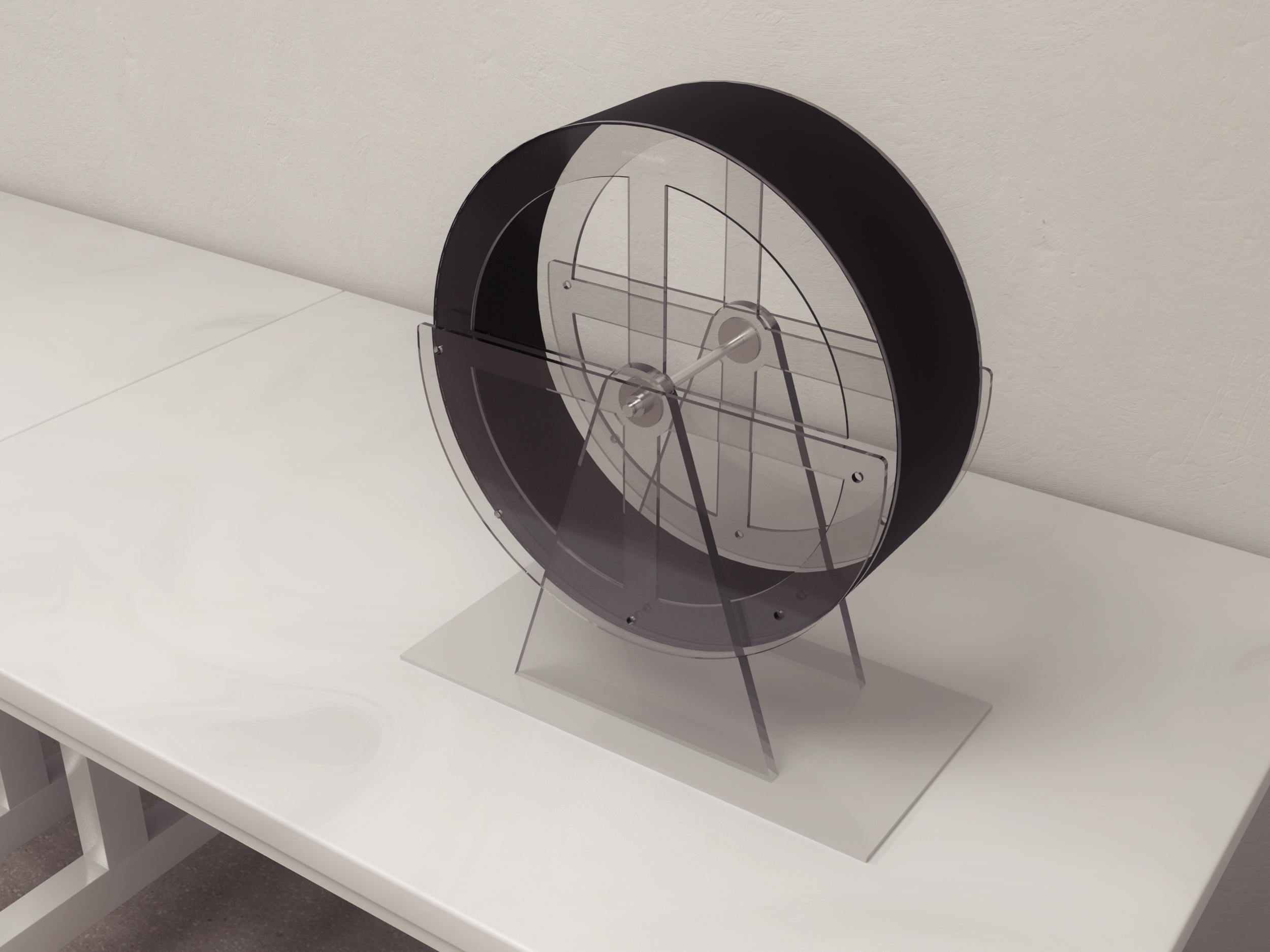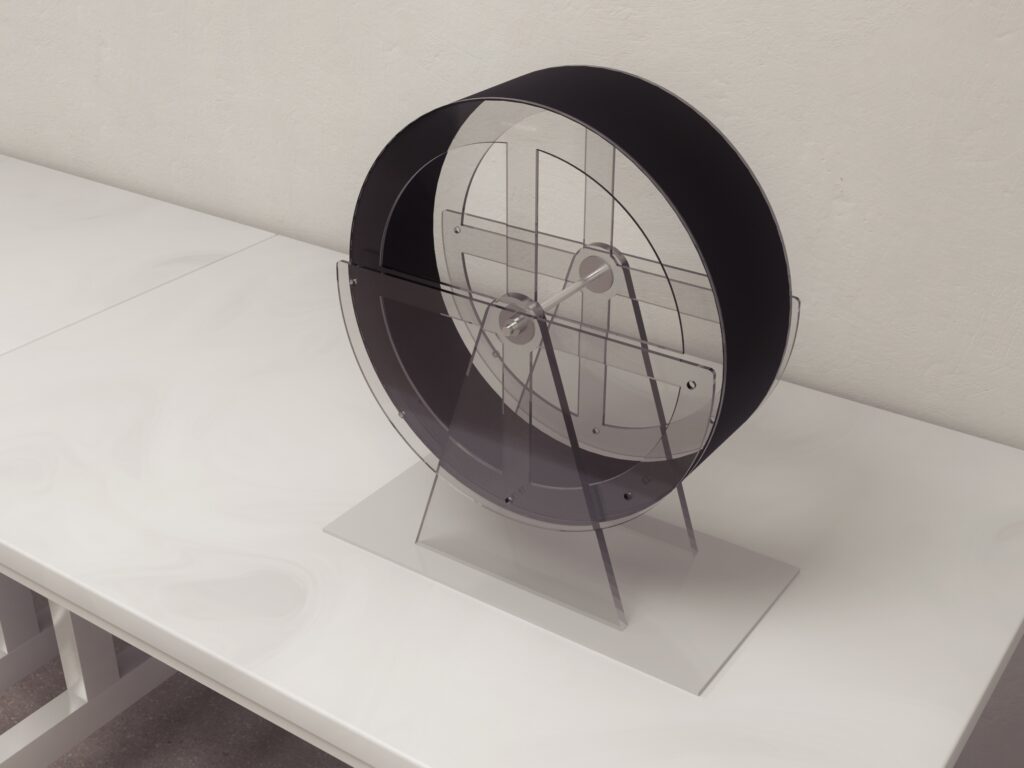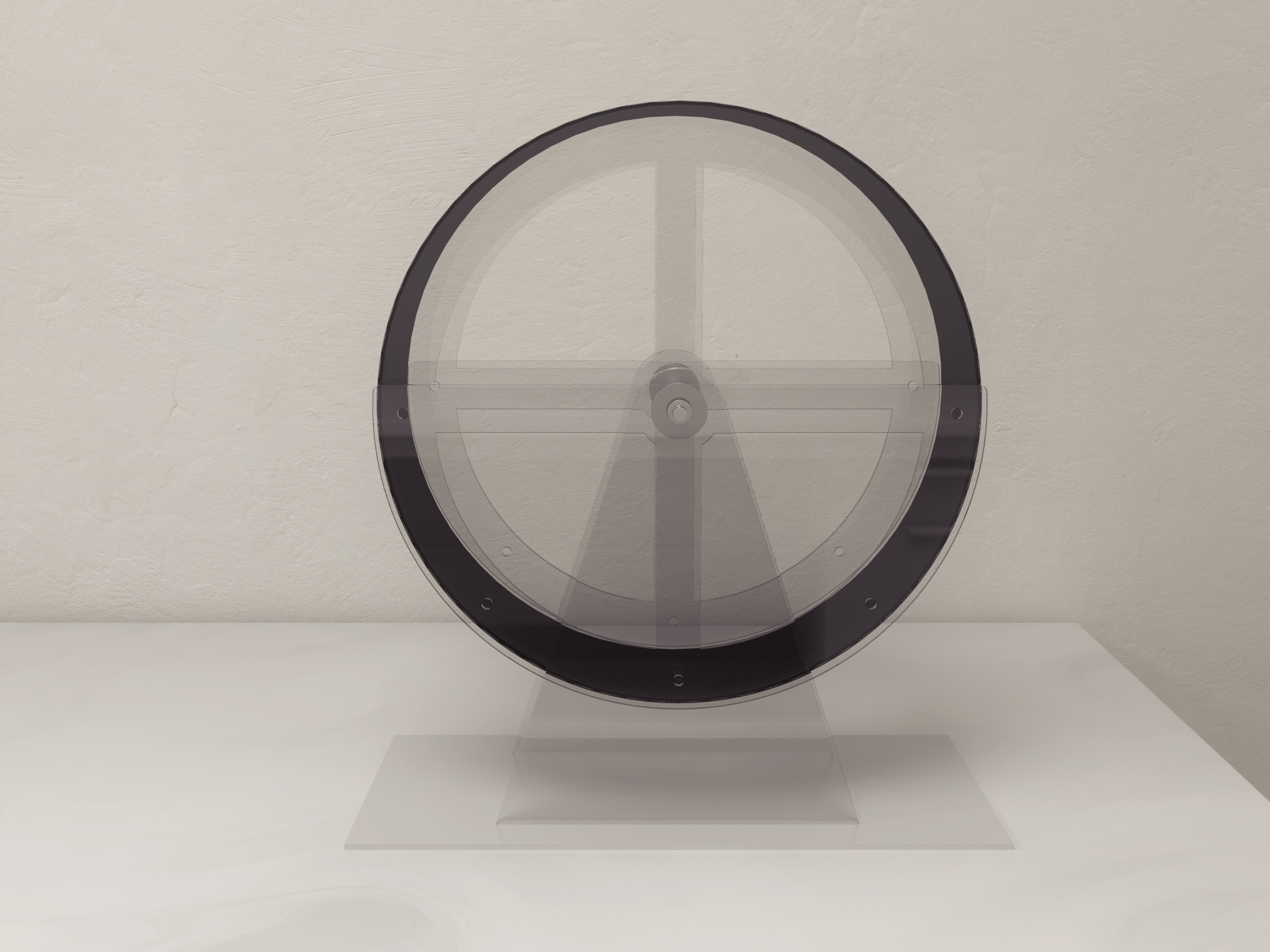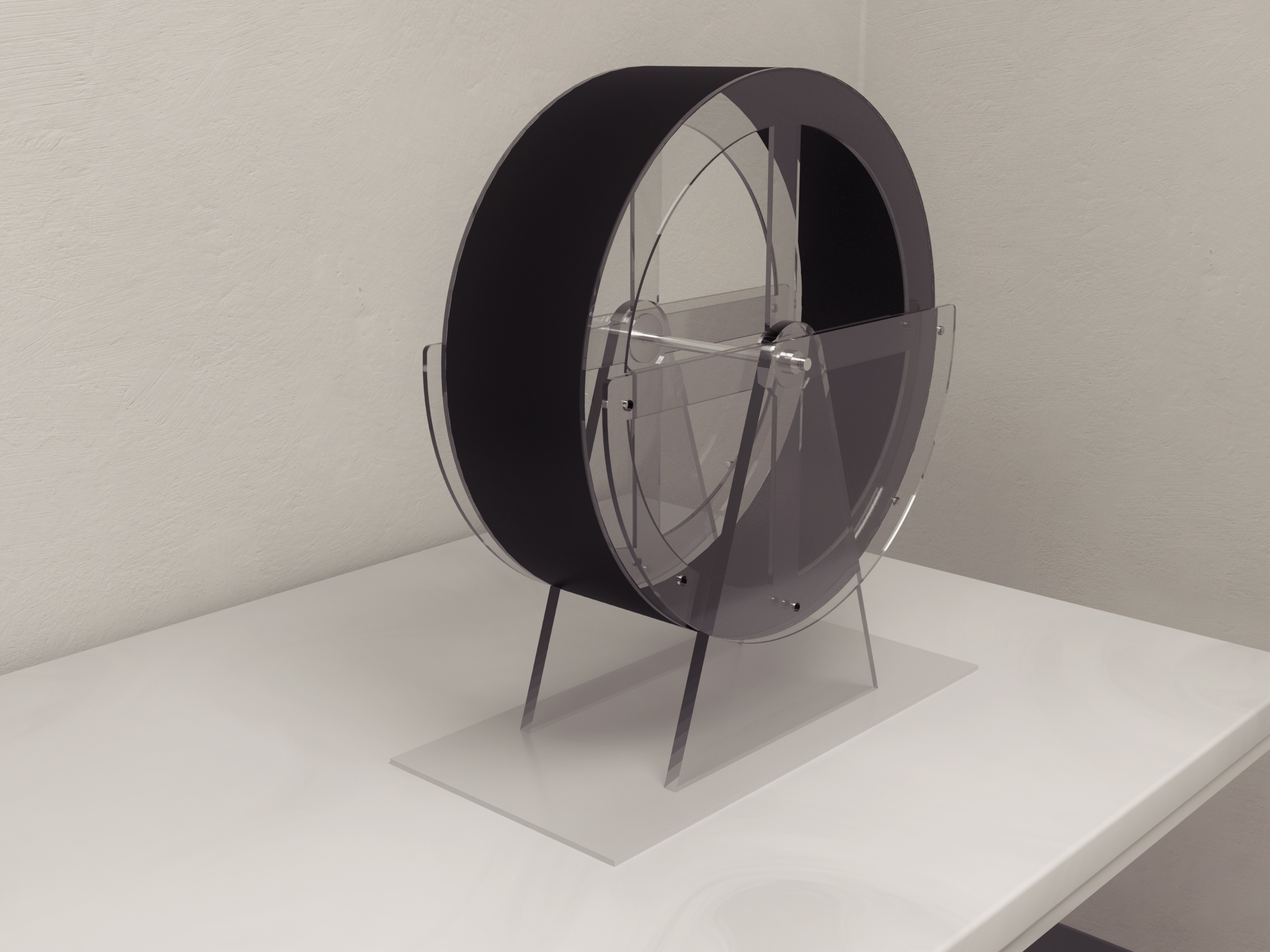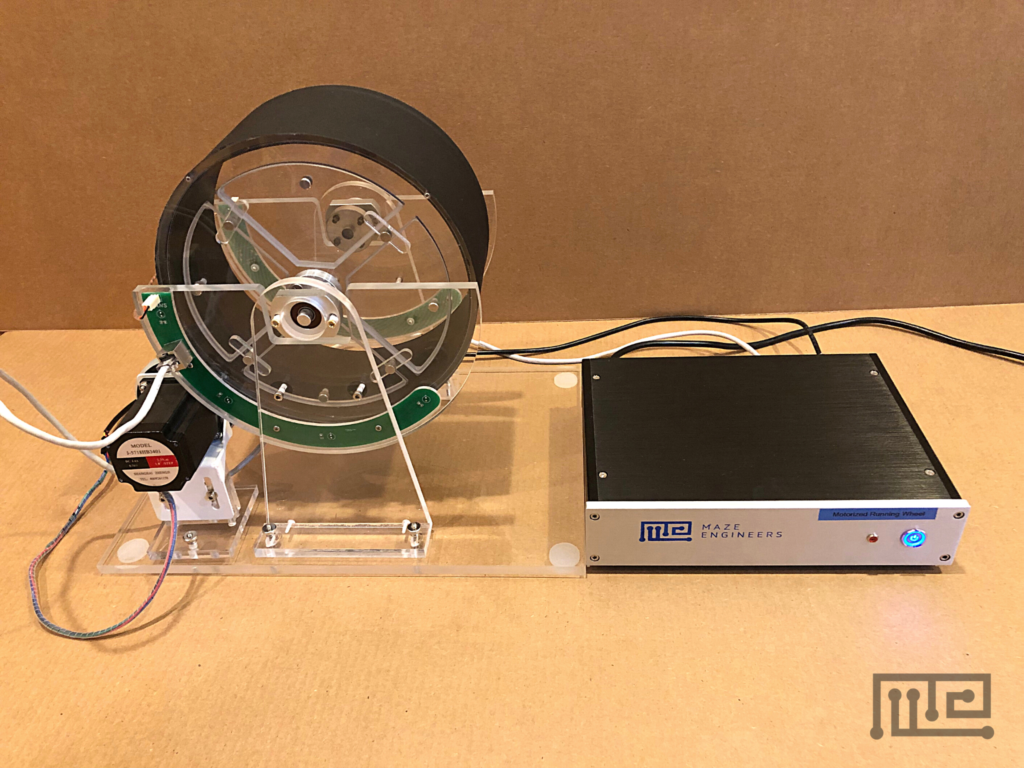The Motorized Running Wheel (MRW) is used for exercise training in rodents. It consists of a centrally motorized wheel which allows forced running at low, and intermediate intensity levels of running.
The Motorized Running Wheel is constructed using clear acrylic. The running track is made of bars. On one side of the wheel, a quarter-circle serves as the entrance and exit for the subject. Two triangular acrylic columns support the running wheel frame above the surface. Eight infrared sensors are placed at 70° between 0° to 140° (effective area of exercise) using a thick semicircular, transparent acrylic sheets attached at the external sides of the two triangular columns. The wheel is centrally motorized and comes with associated software that allows control of training intensity (low and intermediate levels).
Mazeengineers offer the Motorized Running Wheel.
Price & Dimensions
Mouse
$ 2890
+S&HDiameter of wheel: 23 cmWidth of wheel: 10 cm
Height of wheel frame from the ground: 8. 3cm
Angle of infrared sensors: 70° between 0° to 140°
Thickness of semicircular sheets: 0.7 mm
Distance of sheets from the sides of the wheel: 2cm
Rat
$ 2990
+S&HDiameter of wheel: 35 cmWidth of wheel: 15 cm
Height of wheel frame from the ground: 12.4 cm
Angle of infrared sensors: 70° between 0° to 140°
Thickness of semicircular sheets: 1 mm
Distance of sheets from the sides of the wheel: 3 cm
Documentation
Introduction
The Motorized Running Wheel (MRW) is used for exercise training in rodents. In comparison to the Treadmill apparatus, the wheel is less stressful for the animal. However, since the track in the Motorized Training Wheel is made of bars, subjects may often interrupt the forced running training by holding on to them. The wheel, thus, is more suitable for running training at lower and intermediate intensities.
The beneficial effects of exercise on an individual’s physical, emotional, and mental health have been well researched (Vina, Sanchis-Gomar, Martinez-Bello, & Gomez-Cabrera, 2012). The Motorized Running Wheel is one of the many exercise systems often used in animal-based research to evaluate the potential of physical training in improving health and in aiding recovery. The Motorized Running Wheel uses a forced running regime as opposed to voluntary running. This allows consistency in exercise parameters during an investigation. However, the exercise effectiveness of the MRW is slightly lower than the Positioning Running Wheel which allows high-intensity training (Chen, Yang, & Chang, 2016).
The Motorized Training Wheel consists of a centrally motorized wheel. The system allows forced running at low, and intermediate intensity levels of running. The wheel is equipped with infrared sensors to track the subject movement.
Apparatus and Equipment
The Motorized Running Wheel is constructed using clear acrylic. The wheel has a diameter of 35 cm and is 15 cm wide. The running track is made of bars. On one side of the wheel, a quarter-circle serves as the entrance and exit for the subject. Two triangular acrylic columns support the running wheel frame 12.4 cm above the surface. Eight infrared sensors are placed at 70° between 0° to 140° (effective area of exercise) using a 1 mm thick semicircular, transparent acrylic sheets attached at the external sides of the two triangular columns. The sheets are approximately 3 cm away from the sides of the running wheel. The wheel is centrally motorized and comes with associated software that allows control of training intensity (low and intermediate levels).
Training Protocol
Clean the Motorized Running Wheel before training. Ensure that the apparatus is well-lit. Perform the training in a controlled environment to prevent unnecessary stimuli from affecting the training. In addition to the infrared sensors, tracking and video system such as the Noldus EthoVision XT can be used to assist with monitoring the subjects.
The Motorized Running Wheel can be used without pretraining. However, subjects can be trained on the wheel to familiarize them with the apparatus and the wheel acceleration.
Forced Exercise Training
Place the subject in the training wheel and begin the exercise regime based on experiment requirements. It is recommended that the subjects are not overworked and given appropriate rest intervals.
Investigation of the effect of forced and voluntary exercise
Leasure and Jones (2008) evaluated the difference in the effects of forced and voluntary wheel running on the brain and behaviors of female Long-Evans rats. Subjects were divided into three groups; sedentary controls, voluntary runners and forced runners (Motorized Running Wheel). The exercise groups underwent 8 weeks of training covering matching distance. Subjects were administered Bromodeoxyuridine (BrdU) injections (50 mg/kg i.p.) immediately before exercise during the 5th week for 5 days. It was observed that the voluntary runners, in comparison to the forced runners, ran at higher speeds and for less total time. Further, when all three groups were evaluated in the Open Field, forced runners showed an increase in anxiety-like behavior in comparison to the sedentary group. Assessment of BrdU+ cells revealed an increase in surviving cells in the dentate gyrus of both exercise group with forced runners exhibiting significantly more surviving cells.
Investigation of the effects of mild post-stroke exercise
Leasure and Grider (2010) used male Fischer 344 rats (18 months of age) to investigate the effects of mild exercise post-stroke on reactive neurogenesis and recovery of somatosensation. Subjects were divided into four groups; sedentary shams, exercise shams, sedentary stroke, and exercise stroke. Seven days after the surgery, exercise groups were trained on the Motorized Running Wheel for 4 weeks during which the speed and distance were gradually increased. The sedentary groups were placed in stationary MRW for the same length of time as their exercised counterparts. It was observed that exercise led to the enhanced recovery of somatosensory function and increased survival of Bromodeoxyuridine (BrdU+) cells in the ipsilateral dentate gyrus
Data Analysis
The following data can be obtained using the Motorized Running Wheel:
- Distance traveled
- Running time
- Position on the wheel
Strengths and Limitations
Strengths
The Motorized Running Wheel is simple and easy to construct training apparatus. The system doesn’t make use of any aversive motivation such as electric shock used in the Treadmill apparatus. The MRW offers two levels of training intensity which are suitable for mild exercise training. Using Motorized Running Wheel offers better control of exercise parameters in comparison to voluntary running wheels.
Limitations
The Motorized Running Wheel makes use of bars in the running track which the subject can hold on to and interrupt the training. The device is suitable for mild intensity training, unlike the Positioning Running Wheel that can be used for high-intensity training. Training on the Positioning Running Wheel has been observed to be more beneficial than on the Motorized Running Wheel (Chen et al., 2016). Training on the Motorized Running Wheel requires subject to have good motor and locomotion capabilities. Subjects weight must be taken into consideration before beginning training, as performance may vary between different weight groups. Overtraining the subject may result in muscle fatigue. Thus appropriate training regime with rest periods must be used. External factors such as unnecessary visual or auditory stimuli may impact performance.
Summary
- Motorized Running Wheel is an exercise training system for rodents.
- The wheel is centrally motorized and offers only two intensity levels of training. Thus, Motorized Running Wheel is suitable for mild training.
- The running track is made of bars which the subject may hold on to and interrupt the training.
- Motorized Running Wheel training may not be as effective as other training systems.
- Overtraining the subject may result in muscle fatigue and reluctance to run.
References
- Chen, C.C., Yang, C.L., & Chang, C.P. (2016). An Innovative Running Wheel-based Mechanism for Improved Rat Training Performance. Journal of Visual Experiments, (115). doi: 10.3791/54354.
- Leasure, J. L., & Grider, M. (2010). The effect of mild post-stroke exercise on reactive neurogenesis and recovery of somatosensation in aged rats. Experimental Neurology, 226(1), 58–67. doi:10.1016/j.expneurol.2010.08.003
- Leasure, J. L., & Jones, M. (2008). Forced and voluntary exercise differentially affect brain and behavior. Neuroscience, 156(3), 456–465. doi:10.1016/j.neuroscience.2008.07.041
- Vina, J., Sanchis-Gomar, F., Martinez-Bello, V., & Gomez-Cabrera, M. C. (2012).Exercise acts as a drug; the pharmacological benefits of exercise. British Journal of Pharmacology, 167(1):1-12. doi: 10.1111/j.1476-5381.2012.01970.x.
Request a quote
"*" indicates required fields

